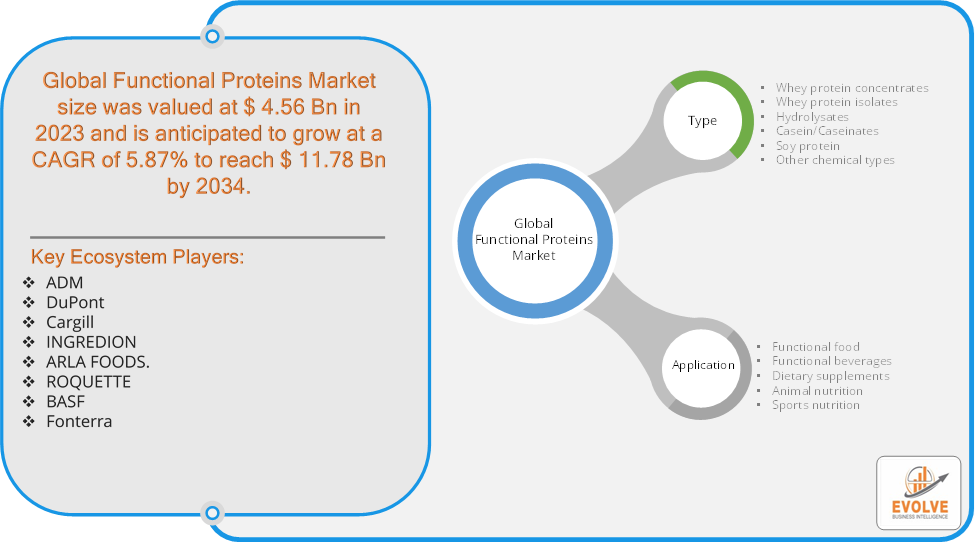Blog
Functional Proteins Market Grows: 5.87% CAGR

Evolve Business Intelligence has published a research report on the Global Functional Proteins Market, 2024–2034. The global Functional Proteins Market is projected to exhibit a CAGR of around 5.87% during the forecast period of 2024 to 2034.
Evolve Business Intelligence has recognized the following companies as the key players in the global Functional Proteins Market: ADM, DuPont, Cargill, INGREDION, ARLA FOODS., ROQUETTE, BASF and Fonterra.
 More Information: https://evolvebi.com/report/functional-proteins-market-analysis/
More Information: https://evolvebi.com/report/functional-proteins-market-analysis/
Market Highlights
The Global Functional Proteins Market is projected to be valued at USD 11.78 Billion by 2034, recording a CAGR of around 5.87% during the forecast period. The functional proteins market refers to the global industry involved in the production, processing, and distribution of proteins that have specific health benefits beyond their basic nutritional value. These proteins are often incorporated into food and beverage products, dietary supplements, and other consumer goods.
The functional proteins market is driven by various factors, including increasing consumer awareness of health and wellness, growing demand for convenient and nutritious food products, and the rise of plant-based diets.
Segmental Analysis
The global Functional Proteins Market has been segmented based on Type and Application.
Based on Type, the Functional Proteins Market is segmented into Whey protein concentrates, Whey protein isolates, Hydrolysates, Casein/Caseinates, Soy protein and Other chemical types. The B Whey protein concentrates segment is anticipated to dominate the market.
Based on Application, the global Functional Proteins Market has been divided into Functional food, Functional beverages, Dietary supplements, Animal nutrition and Sports nutrition. The Animal nutrition segment is anticipated to dominate the market.
More Information: https://evolvebi.com/report/functional-proteins-market-analysis/
Regional Analysis
The Functional Proteins Market is divided into five regions: North America, Europe, Asia-Pacific, South America, and the Middle East, & Africa. In North America region is a mature market for functional proteins, with widespread adoption in sports nutrition, weight management, and clinical nutrition. There’s increasing demand for plant-based proteins, particularly among health-conscious millennials and vegans and the U.S. dominates the regional market, driven by a robust functional food and beverage industry. Canada is also experiencing growth in health-conscious consumers and fitness trends. Europe has seen strong growth in veganism and plant-based diets, driving demand for alternative protein sources like pea and soy proteins. Additionally, consumers in Europe are highly focused on sustainability, promoting the use of eco-friendly and organic functional protein products. Asia-Pacific region is experiencing strong growth, particularly in countries like China, India, Japan, and South Korea. There’s a surge in the consumption of protein supplements and functional foods due to increasing health consciousness and the influence of Western diets. The rising elderly population in countries like Japan is also driving demand for functional proteins in clinical and elderly nutrition and China and India are emerging as key growth drivers due to increasing awareness of protein’s health benefits, urbanization, and expanding middle-class populations. Latin America region is seeing a growing demand for functional protein products, especially in Brazil, Argentina, and Mexico. Rising fitness trends and the demand for protein-rich diets are boosting the adoption of protein supplements and fortified foods. The functional proteins market in middle east and africa region is still developing, but there is growing demand for protein-rich diets due to increasing health awareness. The market potential is high in countries like the UAE and Saudi Arabia, particularly in the sports nutrition and weight management segments.



